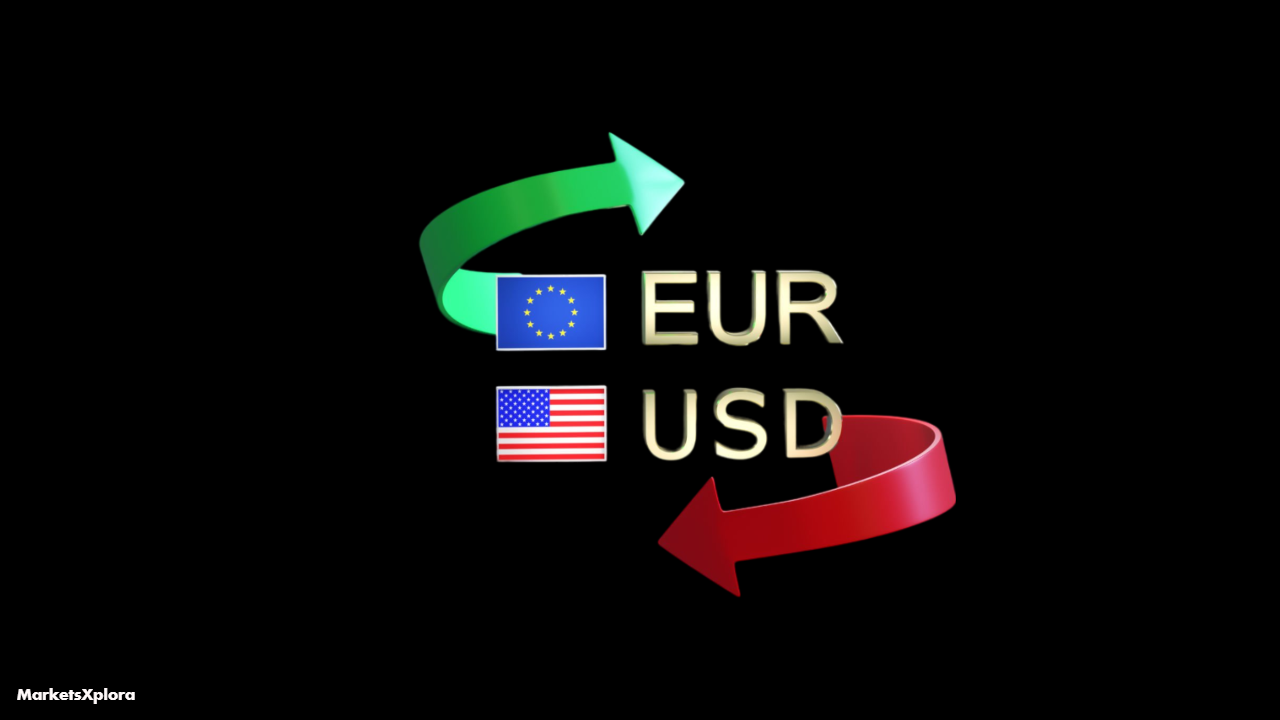Key Insights
- EUR/USD has stabilized above 1.0800, trading above both 20-day and 50-day EMAs (1.0750 and 1.0770).
- The pair has broken above the 200-day EMA (1.0800), signaling a strengthening overall trend.
- A Symmetrical Triangle formation on the daily chart suggests low volatility, with the RSI approaching the key 60.00 level.
Fundamental Outlook
The EUR/USD pair has managed to stabilize above the crucial 1.0800 level in Monday’s European session, showing resilience despite mixed economic signals. The pair’s strength is primarily attributed to growing weakness in the US Dollar, as market participants increasingly price in the possibility of Federal Reserve rate cuts beginning as early as September.
The US Dollar Index (DXY) is hovering near a three-week low around 104.85, reflecting the greenback’s current vulnerability. This weakness stems from mounting evidence of a cooling US labor market, as highlighted in the latest Nonfarm Payrolls (NFP) report. June’s data revealed a slowdown in labor demand, with significant downward revisions to April and May hiring figures. Additionally, the unexpected rise in the Unemployment Rate to 4.1% further supports the narrative of a softening job market.
Wage growth momentum also appears to be moderating, with Average Hourly Earnings declining both on a monthly and annual basis. These factors collectively contribute to easing inflationary pressures and bolster the case for earlier Fed rate cuts. The CME FedWatch tool now indicates a 75.8% probability of a rate cut in September, up from 64% just a week ago.
Looking ahead, market attention will be firmly focused on the US Consumer Price Index (CPI) report for June, scheduled for release on Thursday. This data will be crucial in determining whether the disinflation process, which stalled in the first quarter, has resumed its course.
On the European front, the euro’s outlook remains somewhat uncertain following the French parliamentary elections. Exit polls suggest the formation of a coalition government in the Eurozone’s second-largest economy, with the left-wing New Popular Front unexpectedly gaining an upper hand. This political uncertainty could potentially impact France’s fiscal outlook and require delicate negotiations between various factions.
From a monetary policy perspective, sticky inflation in the Eurozone has tempered expectations for imminent ECB rate cuts. The preliminary Harmonized Index of Consumer Prices (HICP) for June showed steady growth at 2.9% year-on-year, with service inflation remaining stubborn at 4.1%. ECB President Christine Lagarde has emphasized the need for continued vigilance, particularly in the services sector.
Read also! Best Time to Trade EURUSD
EURUSD Technical Analysis

From a technical standpoint, EUR/USD has gained a firm footing above the psychologically important 1.0800 level. The pair’s recent strength is underscored by its position above both the 20-day and 50-day Exponential Moving Averages (EMAs), which are currently situated around 1.0750 and 1.0770 respectively.
The overall trend for the shared currency pair has strengthened considerably, as evidenced by its successful breach of the 200-day EMA, which now acts as support around 1.0800. This move above such a significant long-term moving average is typically seen as a bullish signal.
On the daily timeframe, EUR/USD continues to trade within a Symmetrical Triangle formation. This pattern is characterized by a sharp contraction in volatility, suggesting low trading volumes and narrow price ranges. Such formations often precede significant breakout moves, and traders should be alert for potential directional cues.
The 14-day Relative Strength Index (RSI) has reached the 60.00 level, a zone that often acts as a demarcation between neutral and bullish momentum. A decisive move above this level could potentially trigger a more robust bullish impulse.


